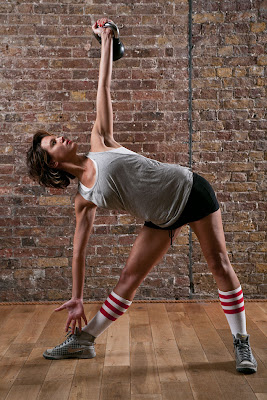“The loftiest
edifices need the deepest foundations.” George Santayana
The most important thing in all areas of life is to have a
solid foundation. Just like a building that we want to last is to have a good
foundation, the difference is our foundation needs to move, rotate while staying
stable. Our core is our foundation, if the core is weak it leaves us open to a
lot of issues. Research has shown a
decrease in low back pain when strengthening the deep abdominals, hamstrings
strains relate strongly to poor glute max activation, Shoulder mobility issues
and shoulder pain relate strongly to poor posterior cuff strength and scapulae
stability. The good news is we can take steps to correct a weak core. We are going to look at the core, define what
it is, look at how to train it correctly. So we all have a strong foundation!
The general accepted
idea is that the core is the abs and low back, but the core goes from hips to shoulders.
This means that the core involves two systems, the local stabilization system,
and the global stabilization system. The
local stabilization system involves the muscles that attach to the vertebrae,
they are responsible for keeping your spine stabilized. Muscles in this system
are the transverse abdominus and the multfidi, the secondary muscles are
internal obliques, diaphragm and pelvic floor muscles. The local muscles are
made up of slow twitch fibers, active in endurance activities. They are
activated at low resistance levels. The global stabilization system are
superficial and are responsible for controlling for body’s movement. They are
made up of the following muscles: rectus abdominus, external oblique, erector
spinae, psoas major and the ilicostalis. They are made up of fast twitch fibers,
used in power activities, and activated in higher resistance levels. Many
people have a weak core is due to working one system without engaging the other
system. So lets take a look at the how to train the core correctly.
The first thing we
need to do is learn how to brace, abdominal bracing allows for increased spinal stiffness and allow for
a co-contraction via their attachment to the lumbodorsal fascia with the
multifidi How to brace: reach behind
your back and press your thumbs into your lower back extensors while you bend
from your hips, feel the extensor contract. Then extend into an upright posture
to the point where you feel flaccid again, without moving contract the abs and
feel the extensors contract again. You
have braced.
Onto the exercises
to for proper core training
Front Plank :
Start in a push up
position, move the forearms to rest on the floor. Use the core bracing
technique. Pull your shoulder blades towards your low back, tighten the lats,
tight the glutes. Hold for 30 seconds
and release onto your knees. Lat activation is important in all pressing and
pulling movements as it stabilizes the shoulder.
Psoas Stretch Start in a half kneeling stretch with the
back leg, fell the front of the hip to
stop it from rotating. Stand in a lunge position, stretch the iliacus
and hip portion of the psoas muscle.
Janda situp Start
on your back, place a stability ball under your legs. Pull your heels to your
butt through the stability ball, as you sit up. The sit up is from bottom of
the chest up, the whole thoracic piece comes up as one. Do not lead with the
head.
Bird Dog Get on your hands and knees, brace your abs. raise the
opposite arm and leg hold for a count of 3 repeat on each side three times.
Glute
Bridge
Lie on your back with your knees bent, dig your heels into
the floor. Squeeze your glutes at the bottom, press your hips upwards off the
floor into extension by contracting the glutes. There should be a 90 degree
angle between the upper and lower leg.
Glute March It’s
the same principle as the glute bridge, you extend one leg straight out one at
a time, hold for two counts, switch legs.
Russian Twist Sit on the floor knees bent like in a sit
up position, keep the feet together and slightly above the ground. Keep your
torso straight with the back at a 45 degree angle. Hold your arms together away
from the body, grad a medicine ball with both hands move from side to side touching
the ball to the ground on each side.
A strong core is the center axis from which all movement
will take place. Imagine the body as a wheel, the core would be the hub and the
limbs would be spokes. Hopefully this article has opened your eyes to the
importance of the core, and how to train the core properly. On the agenda for
tomorrow is the top ten stress relievers to keep that stress down for a
beautiful weekend. We will back again on Sunday with another article looking at
Sweeteners. Please share this blog and sign up for the mailing list.






























